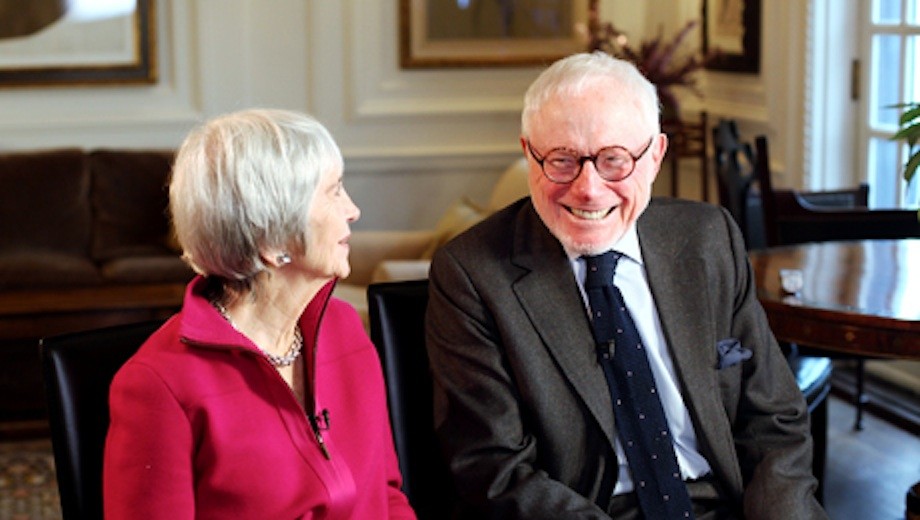“Collaboration is my mantra,” says Richard Gray. “I believe in it. The success of every organization I’ve been involved in, to a large degree, is the result of opening up and establishing collaborations with others.”
That attitude also imbues a major new project named to honor Gray and his wife, Mary, AM’78. In June, the University announced the creation of the Richard and Mary L. Gray Center for Arts and Inquiry, which will catalyze innovative collaborations involving University faculty, artists, and scholars from around the world.
The couple’s major gift to the University creates a forum for artists and scholars to team up in experimental and unscripted ways. One of the Gray Center’s signature initiatives, jointly supported by the Andrew W. Mellon Foundation, is a residential fellowship program that will bring distinguished visitors to campus for intensive collaborations with University faculty, with a focus on multifaceted and interdisciplinary projects.
Passionate patrons of the arts, the Grays are longtime members of the Humanities Division Visiting Committee. After earning an art history degree at Chicago, Mary Gray wrote two books on public art published by the University of Chicago Press. Richard Gray, a prominent art dealer and collector, is a life trustee of the Chicago Symphony Orchestra and the Art Institute of Chicago and chairman emeritus of the Smart Museum of Art’s board of governors.
“We were involved in the civic activities of the community from the very beginning, early on in our marriage,” says Richard. Although At the Gray Center, artists and scholars will team up in experimental and unscripted ways.they now live on Chicago’s North Side, the couple raised three children in Hyde Park. Over time, says Richard, they “adopted the University” and its arts institutions. “I think a lot of it has to do with the relationships we’ve had with so many people associated with the University,” says Mary.
As a guiding force behind the Chicago Humanities Festival, the Smart Museum, and other art institutions in the city, Richard Gray says he always urged people to choose collaboration over competition. “I’ve had an inclination toward making things happen by combining resources and energies, in everything I’ve been involved in,” he says.
“The University has developed that way, too,” adds Mary, by encouraging cross-disciplinary work among scholars but also closer relationships with the wider community. The Gray Center hopes to foster both trends by creating ways for practicing artists to engage with faculty, students, and the public. “Everyone is talking to each other,” says Richard, “and the arts are an equal partner with scholars in the academic enterprise.”
The first four collaborative projects planned for 2011–12 reflect the Gray Center’s aspiration to nurture a culture of experimentation that supports new forms of scholarly inquiry and creative expression. Cartoonist Alison Bechdel—author of the bestselling memoir Fun Home: A Family Tragicomic—will work with literary scholar and Neubauer Family Assistant Professor Hillary Chute to develop a critical language for nonfiction comics. Mexican choreographer and dancer Claudia Lavista will collaborate with music composition students and faculty—including professors Martha Feldman, Augusta Read Thomas, Shulamit Ran, and others—to develop a new site-specific work. New York–based architect Jamie Carpenter will pair with UChicago physicist Sidney Nagel to investigate the physics and aesthetics of light. With faculty, playwright Tony Kushner will explore possibilities for new dramatic projects during the rehearsals and run of Court Theatre’s production of Angels in America.
In his own career, David Levin, the center’s inaugural director, embodies the spirit of dialogue between scholars and artists. Levin is a professor in Germanic Studies, Cinema and Media Studies, Theater and Performance Studies, and the College. His research spans German literature, opera, film, and performance. He has worked as a dramaturge for opera and ballet at various theaters in Germany and at the Lyric Opera of Chicago.

